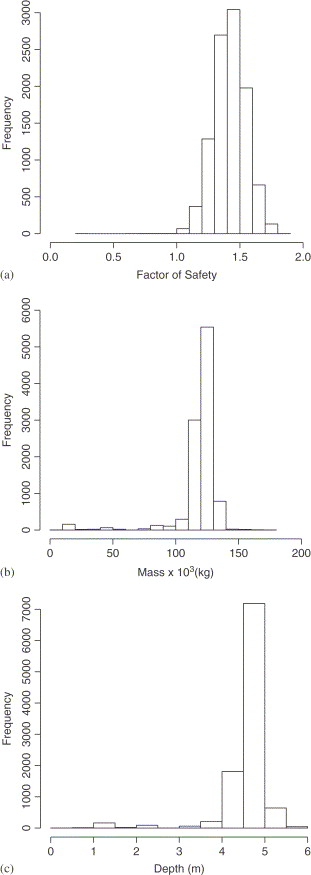Uncertainty
Analysis of the sensitivity of predictions of slope instability to input data and model uncertainties provides a rationale for targeted site investigation and iterative refinement of geotechnical models. However, sensitivity methods based on local derivatives do not reflect model behaviour over the whole range of input variables, whereas methods based on standardised regression or correlation coefficients cannot detect non-linear and non-monotonic relationships between model input and output. Variance-based sensitivity analysis (VBSA) provides a global, model-independent sensitivity measure.
The approach has been demonstrated using the Combined Hydrology and Stability Model (CHASM) and is applicable to a wide variety of computer models. The analysis provided quantified evidence of well-known sensitivities as well demonstrating how uncertainty in slope failure during rainfall is, for the examples tested here, more attributable to uncertainty in the soil strength than to uncertainty in the rainfall.
VBSA provides a global impression of model sensitivity by estimating the contribution, averaged over the input space, that the variance of each input variable (acting individually or in combination with other variables) makes to the output of interest. The approach is model-independent and, unlike standardised regression or correlation coefficients, can detect non-linear and non-monotonic relationships between model inputs and outputs.
Reference:
Hamm, N.A.S., Hall, J.W. and Anderson, M.G. (2006) Variance-based sensitivity analysis of the probability of hydrologically induced slope instability. Computers and Geosciences, 32(6): 803-817.

